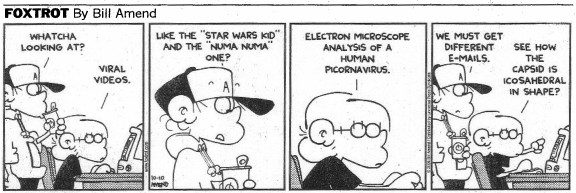Virology – Biology W3310/4310
Spring 2016


This Columbia University virology course is offered each year in the spring semester.
Prerequisite: Two semesters of a rigorous, molecularly-oriented Introductory Biology course (such as C2005), or the Instructor’s permission (vrr1@columbia.edu).
Course Name: Virology
Sessions: M, W 4:10 – 5:25 PM
Start date: Wednesday, January 20, 2016
Points: 3
Location: Northwest Corner 501
Course #: Biology W3310.001 or W4310.001
Instructor: Prof. V. Racaniello
Description
The basic thesis of the course is that all viruses adopt a common strategy. The strategy is simple:
1. Viral genomes are contained in metastable particles.
2. Genomes encode gene products that promote an infectious cycle (mechanisms for genomes to enter cells, replicate, and exit in particles).
3. Infection patterns range from benign to lethal; infections can overcome or co-exist with host defenses.
Despite the apparent simplicity, the tactics evolved by particular virus families to survive and prosper are remarkable. This rich set of solutions to common problems in host/parasite interactions provides significant insight and powerful research tools. Virology has enabled a more detailed understanding of the structure and function of molecules, cells and organisms and has provided fundamental understanding of disease and virus evolution.
The course will emphasize the common reactions that must be completed by all viruses for successful reproduction within a host cell and survival and spread within a host population. The molecular basis of alternative reproductive cycles, the interactions of viruses with host organisms, and how these lead to disease are presented with examples drawn from a set of representative animal and human viruses, although selected bacterial viruses will be discussed.
Textbook
The recommended textbook is Principles of Virology. Vol I: Molecular Biology, Vol. II: Pathogenesis and Control (S.J. Flint et al., Third Edition, ASM Press 2015).
Other course resources
1. Students should read Prof. Racaniello’s virology blog for information relevant to the course.
2. Students should listen to the weekly podcast “This Week in Virology”, produced by Prof. Racaniello, for additional material about viruses relevant to the course. You can subscribe to TWiV at iTunes.
3. Lecture slides (pdf) will be posted at this website before each class.
4. Videocasts of all lectures (slides plus audio) will be posted at this website.
